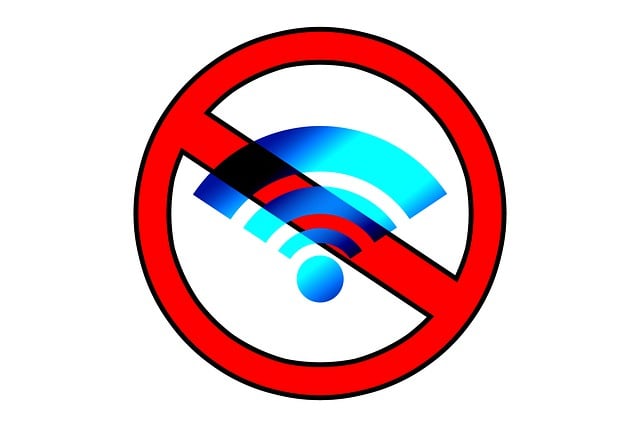Belkin Router Keeps Dropping
In an increasingly connected world, a stable and reliable internet connection is paramount for both work and leisure. However, the frustration caused by intermittent internet connectivity issues, particularly those involving a Belkin router, can disrupt our digital routines. The experience of a Belkin router keeps dropping internet connection can leave users seeking answers to restore seamless online experiences. In this exploration, we delve into the common causes behind this Belkin router no internet access issue and offer potential solutions to help users regain the uninterrupted connection they rely on. Whether for remote work, online entertainment, or virtual communication, understanding and resolving this problem can significantly enhance the quality of our digital lives.
Why Belkin Router Keeps Dropping Internet:
Experiencing Belkin router no internet access can be frustrating and disruptive to your online activities. Several factors could contribute to this issue, which might require investigation and troubleshooting to pinpoint the exact cause. Here are some potential reasons why your Belkin router won’t connect to internet:
- Interference and Signal Strength: Wireless routers can experience interference from neighboring WIFI networks, electronic devices, or physical obstacles like walls and furniture. Intermittent connectivity might also be caused by weak signal strength because of distance from the router, causing Belkin router won’t connect to internet.
- Outdated Firmware: Router firmware plays a crucial role in maintaining stable connections. Outdated firmware can lead to Belkin router keeps dropping internet and unstable connections.
- Router Overheating: Routers that overheat due to inadequate ventilation or prolonged usage can experience performance issues, including frequent disconnects.
- Channel Congestion: Routers automatically select channels for WiFi communication, but if multiple routers in your vicinity are using same channel, it can lead to Belkin router no internet access or interference.

- Network Traffic Overload: If too many devices are connected to the router simultaneously, the network may become overloaded, causing Belkin router won’t connect to internet.
- Hardware Malfunctions: Faulty hardware components within the router, such as the wireless radio or power supply, can cause Belkin router won’t connect to internet.
- ISP Issues: Internet Service Provider (ISP) problems, such as signal disruptions or network maintenance, can affect the router’s ability to maintain a stable connection, causing Belkin router keeps dropping internet connection.
- IP Address Conflicts: Conflicts in IP addresses between devices on the network can result in Belkin router keeps dropping internet connection.
- Security Settings: Incorrect or overly strict security settings on the router can sometimes lead to unexpected disconnects or Belkin router no internet access issues.
- Environmental Factors: Extreme weather conditions, electrical interference, or other external factors can impact the router’s performance.
- Wiring and Cable Problems: Damaged or loose cables connecting the router to the modem or the wall jack can lead to intermittent connectivity.
- Router Age and Quality: Older routers or routers of lower quality might struggle to maintain stable connections compared to newer, more advanced models.
Determining the precise cause of your Belkin router keeps dropping internet connection may involve a process of elimination and troubleshooting.
How To Fix Belkin Router Dropping Internet Issue:
Fixing Belkin router won’t connect to internet issue involves a systematic approach to troubleshooting and addressing potential causes. Here’s a general guide on steps you can take to resolve the issue:
- Check Hardware and Connections: To fix Belkin router no internet access issues, ensure that all cables connecting your router to the modem and power source are secure and undamaged. Check for any loose or frayed cables.
- Update Firmware: For Belkin router keeps dropping issue, log in to your router’s web interface and check for available firmware updates. If updates are available, follow the instructions to install them.
- Choose the Right WiFi Channel: Access your router’s settings and choose a less congested WiFi channel. This can help reduce interference from neighboring networks.
- Adjust Router Placement: If your Belkin router won’t connect to internet, reposition the router in a central location within your home, away from physical obstacles and electronic devices that could cause interference.

- Reduce Interference: For Belkin router no internet access issue, move electronic devices like cordless phones, microwave ovens, and baby monitors away from the router. They can interfere with the WiFi signal.
- Monitor Network Traffic: If your Belkin router won’t connect to internet, limit the number of devices connected to the network simultaneously. Consider disconnecting devices not in use to reduce network load.
- Verify ISP Connection: Contact your Internet Service Provider (ISP) to ensure there are no issues on their end. They can also check the signal quality reaching your modem.
- Perform Belkin router reset: You can reset Belkin router to its default settings & reconfigure it. This can often resolve software-related glitches causing connection drops.
- Check for Overheating: If your Belkin router keeps dropping internet connection, ensure your router is placed in a well-ventilated area to prevent overheating. If it feels excessively hot, consider adding a fan or cooling solution.
- Update Wireless Drivers: If you’re experiencing issues on specific devices, update their wireless network drivers to the latest versions.
- IP Address Management: For Belkin router no internet access issue, ensure that devices on your network have unique IP addresses to prevent conflicts. Check if the router’s DHCP settings are configured properly.
- Check for Hardware Issues: If none of the steps resolve the issue, there might be a hardware problem with the router.
Remember that these steps provide a general guideline, and the specific actions required may vary based on your router model and the nature of the issue.
How To Reset Belkin Router:
Belkin router reset can help resolve various issues or restore the router to its default settings. There are two different sorts of resets available: a soft reset and a hard reset. Here’s how to reset Belkin router:

Soft Reset:
- Log In to the Router’s Web Interface: To reset a Belkin router, open web browser on a device connected to the router & enter router’s IP address in the address bar. The default Belkin router IP address is usually “192.168.2.1” or “192.168.1.1”. Press Enter.
- Enter Login Credentials: You’ll be prompted to enter a username & password to access the router’s settings. The default credentials are often “admin” for both username and password. If you’ve changed these settings before, use your customized credentials.
- Navigate to the Reset Option: Once logged in, navigate to the router’s settings menu. Look for a section related to system settings, maintenance, or troubleshooting. You should find a “Reset” or “Restore Factory Defaults” option.
- Perform Soft Belkin router reset: To reset a Belkin router, click on the reset option and confirm that you want to proceed. Your internet connection will briefly be interrupted as the router resets to its default settings.
Hard Reset:
- Locate the Reset Button: On the back or the bottom of router, there’s a small reset button. It’s usually recessed and might require a paperclip or a pin to press.
- Perform the Hard Reset: With the router powered on, use a paperclip or pin to press & hold the reset button for about 10-20 seconds. The router’s lights might flash, indicating that the reset process is taking place.
- Release the Button: After holding button for the required time, release it. The router will restart, and the lights will stabilize after a brief moment.
Important Notes
- All custom settings, including WiFi network names, passwords, and port forwarding setups, will be erased by doing a hard reset.
- After a reset, you’ll need to set up your router again, including configuring WiFi settings, security settings, and other preferences.
After completing the reset, you can set up your Belkin router again by accessing its web interface, configuring the necessary settings, and connecting devices to the WiFi network.
Please be cautious when performing a reset, as it will remove any customizations you’ve made to the router. If you’re uncertain about the process or concerned about losing important settings.
Conclusion:
Addressing the issue of a Belkin router repeatedly dropping its internet connection requires a methodical approach and an understanding of the various factors that can contribute to such disruptions. By carefully considering factors like signal interference, firmware updates, and hardware integrity, users can take proactive steps to resolve the problem and restore consistent connectivity. It’s essential to remember that troubleshooting might involve a combination of adjustments, ranging from optimizing router placement to updating settings and even performing resets if necessary. As technology continues to integrate into every facet of our lives, maintaining a stable internet connection becomes a cornerstone of productivity and entertainment. By tackling these connectivity challenges head-on, individuals can ensure their online experiences remain smooth, seamless, and enjoyable. To know more about support services, you can navigate to our Belkin Support Page.

